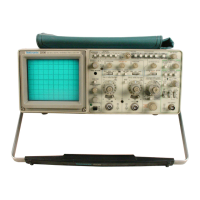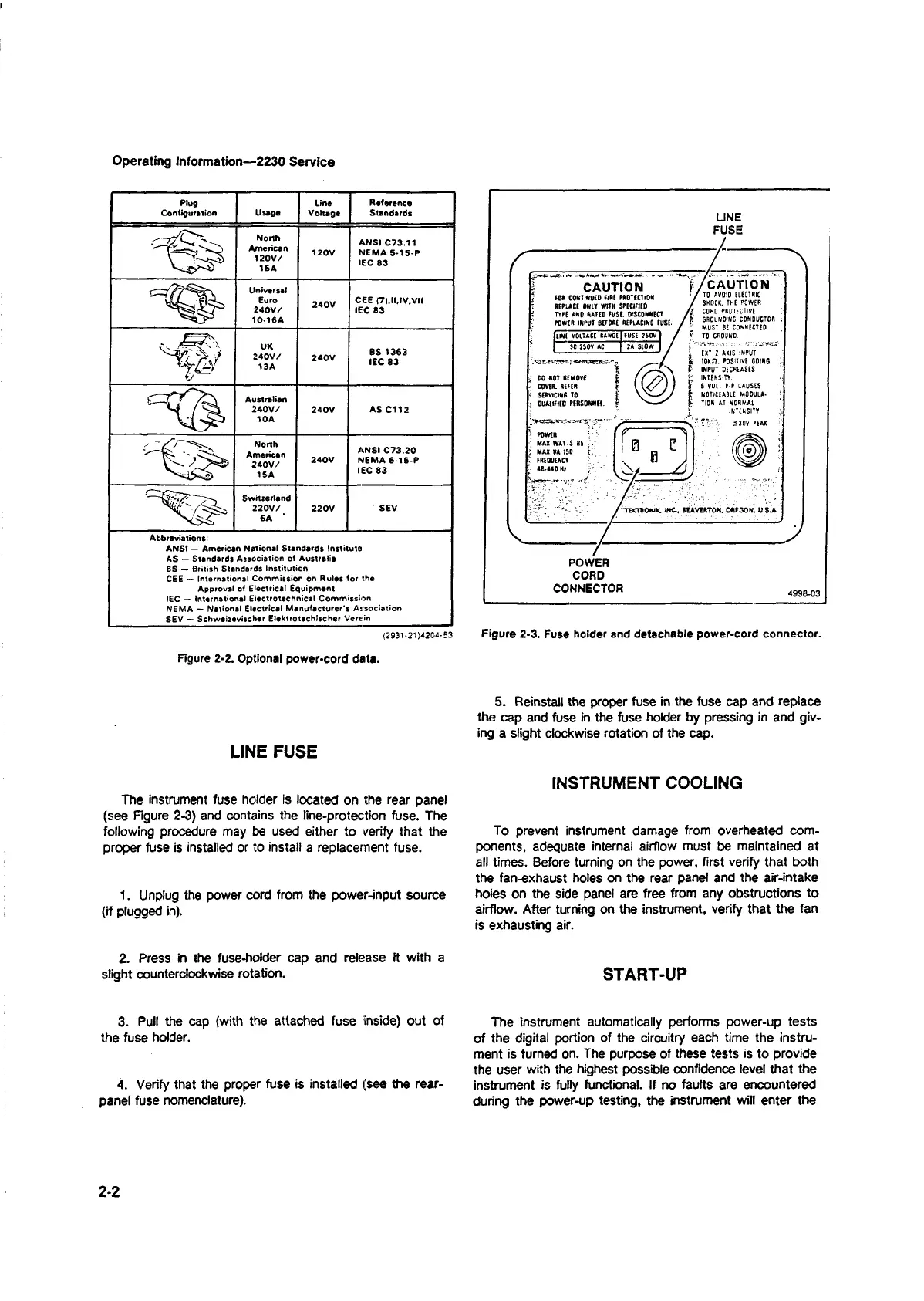Operating Information—2230 Service
Plug
Configuration
Usage
Line
Voltage
Reference
Standards
North
American
120V /
ISA
120V
ANSI C73.11
NEMA 5-15-P
IEC 83
Universal
Euro
240V /
10-16A
240V
CEE (7MMV.VII
IEC 83
<i t
UK
240V /
13A
240V
BS 1363
IEC 83
Australian
240 V /
10A
240V
AS C112
North
American
240V /
ISA
240V
ANSI C73.20
NEMA 6-1S-P
IEC 83
Switzerland
220V /
6A *
220V
SEV
Abbreviations:
ANSI — American National Standards Institute
AS — Standards Association of Australia
BS —■ British Standards Institution
CEE — International Commission on Rules for the
Approval of Electrical Equipment
IEC — International Electrotechnical Commission
NEMA — National Electrical Manufacturer's Association
SEV — Sehweizevischer Elektrotechischer Verein
(2931- 21)4204-53
LINE
FUSE
CA U TIO N
FOX CONTINUED FIXE PROTECTION
REPUCE ONIY WITH SPECIFIED
TYPE *10 RATED FUSE. DISCONNECT
POWER INPUT BEFORE REPLACING FUSE.
C A U TIO N
TO AVOID ELECTRIC
SHOCK. THE POWER
CORD PROTECTIVE
GROUNDING CONDUCTOR .
MUST BE CONNECTED
TO GROUND.
EXT
2
AXIS INPUT
)0 x n . POSITIVE GOING ’
INPUT DECREASES
INTENSITY.
S VOLT P.P CAUSES
NOTICEABLE MODUIA- '
TION AT NORMAL
INTENSITY
: n ~ ‘ £ 3 0 V PEAK
POWER
CORD
CONNECTOR
4998-03
Figure 2-3. Fuse holder and detachable power-cord connector.
Figure 2-2. Optional power-cord data.
LINE FUSE
The instrument fuse holder Is located on the rear panel
(see Figure 2-3) and contains the line-protection fuse. The
following procedure may be used either to verify that the
proper fuse is installed or to install a replacement fuse.
1. Unplug the power cord from the power-input source
(if plugged in).
2. Press in the fuse-holder cap and release it with a
slight counterclockwise rotation.
3. Pull the cap (with the attached fuse inside) out of
the fuse holder.
4. Verify that the proper fuse is installed (see the rear-
panel fuse nomenclature).
5. Reinstall the proper fuse in the fuse cap and replace
the cap and fuse in the fuse holder by pressing in and giv
ing a slight clockwise rotation of the cap.
INSTRUMENT COOLING
To prevent instrument damage from overheated com
ponents, adequate internal airflow must be maintained at
all times. Before turning on the power, first verify that both
the fan-exhaust holes on the rear panel and the air-intake
holes on the side panel are free from any obstructions to
airflow. After turning on the instrument, verify that the fan
is exhausting air.
START-UP
The instrument automatically performs power-up tests
of the digital portion of the circuitry each time the instru
ment is turned on. The purpose of these tests is to provide
the user with the highest possible confidence level that the
instrument is fully functional. If no faults are encountered
during the power-up testing, the instrument will enter the
2-2

